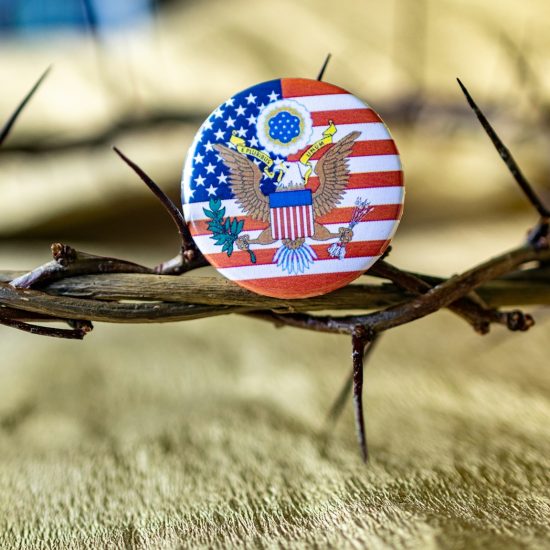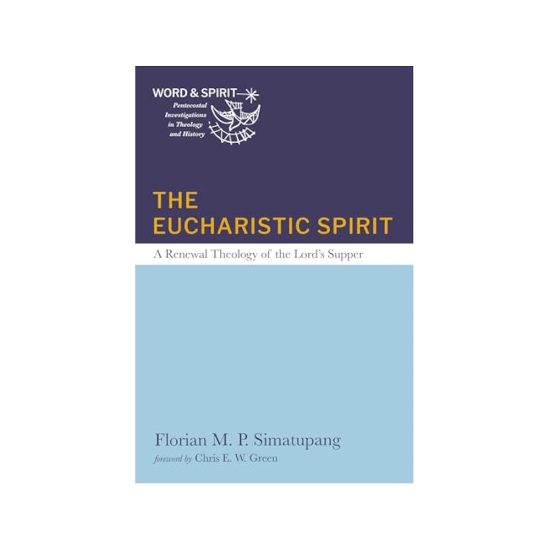

SISTER, SINNER: The Miraculous Life and Mysterious Disappearance of Aimee Semple McPherson. By Claire Hoffman. New York: Farrar, Straus and Giroux, 2025. 369 pages.
If the name Aimee Semple McPherson doesn’t seem familiar, there was a time when her name was among the most recognizable in the country, ranking with the great celebrities of the day. In part, that was due to a series of scandals that she was caught up in, but she was also known for being a pioneering woman evangelist and preacher. This in itself was scandalous to some. Aimee Semple McPherson’s life story is complicated and intriguing. It has been told by numerous writers over the years. These books cover different elements of her life, though many focus on her “mysterious disappearance.” Those words are found in the subtitle to the latest biography of McPherson, which was written by Claire Hoffman.

Robert D. Cornwall
If her name is unfamiliar, that is because she died a long time ago, and even the denomination that she founded doesn’t emphasize her ministry. Nevertheless, Aimee Semple McPherson, who died in 1944 at the age of fifty-four and was known to her followers simply as Sister, is an intriguing figure worth knowing about. While the scandals may interest some, I would suggest that she is worth knowing about because she was a trailblazer. Not only was she a woman preacher, which at a time when very few women were given that opportunity, even in mainline churches, this was a remarkable achievement. But she was also ahead of her time in the use of media, especially radio, which she used to get her message across, paving the way for later evangelists such as Katherine Kuhlmann and Oral Roberts. She also built one of the first mega-churches in the United States, Angeles Temple in Los Angeles. Yet, there were the scandals, which unfortunately are what she is best known for.
Although I do not share her theology or her politics, I have long been fascinated by her life. Interestingly, it isn’t because I once was a member of the denomination she founded. That is because the church made little reference to her life and ministry. Nevertheless, once I discovered her story, I began reading the biographies, made pilgrimages to her church (and even to her grave at Forest Lawn), and wrote an article on her theology for Pneuma (the journal of the Society of Pentecostal Studies). So, when the opportunity came to review the latest biography, that written by Claire Hoffmann, I had to read it (and review it).
Claire Hoffman’s biography of Sister Aimee is titled Sister, Sinner: The Miraculous Life and Mysterious Disappearance of Aimee Semple McPherson. Hoffman is a journalist, having served as a staff reporter for the Los Angeles Times and Rolling Stone. She also has an MA in religion from the University of Chicago, as well as an MA in journalism from Columbia University. She brings a background in journalism, having covered both religion and celebrities. Sister Aimee combines both of these elements in her life story. Hoffman’s biography joins several others, which cover different parts of her life story. Some of these biographies have been hagiographical, while others are sensationalist. The best of them, however, seek to address the fullness of her story. Hoffman focuses on one particular dimension of the story, but does so in a fair way. So, I would put her biography together with those written by Edith Blumhoffer (Aimee Semple McPherson: Everybody’s Sister), Daniel Epstein ( Sister Aimee: The Life of Aimee Semple McPherson), and Matthew Sutton (Aimee Semple McPherson and the Resurrection of Christian America). Each of these four biographies offers something different, making all of them worth reading. Blumhoffer’s biography focuses more on the religious elements of Aimee’s life and ministry, while Sutton focuses on her public life. Epstein, who is a poet and playwright, offers us a more humanizing biography. Of the three, Hoffman’s biography is closest to that of Epstein.
While Hoffman’s book Sister, Sinner devotes considerable space to Sister Aimee’s infamous disappearance and its aftermath, and the title of the book (along with the cover) suggests the possibility of a sensationalist account, I found Hoffman’s portrayal of Aimee’s life to be balanced and nuanced. We get a sense of her calling, her giftedness, her charisma, but also the shadow side of her life. One of the contributing factors to the focus on the disappearance is Hoffman’s access to court records covering Aimee’s pretrial hearing, records that only the Foursquare archives have a full copy of. Therefore, she can tell parts of the story that were unavailable to previous biographers.
As I read Hoffman’s biography, I found her to be sympathetic but realistic. When it comes to the disappearance, she tells Aimee’s side of the story, but is skeptical (as am I). If Aimee’s story is true, it is quite miraculous, but the facts simply don’t line up. Nevertheless, the person who emerges from this story is fully human. She is not a saint, as some of her followers believed. While she was certainly a sinner, she was also simply a human being who struggled to deal with her celebrity and a deep loneliness that contributed to her susceptibility to scandal.
As I noted earlier, the woman known as Aimee Semple McPherson, the focus of Claire Hoffman’s biography, was a powerful evangelist who preached to millions over the years. She did so in person and on the radio, something she pioneered. She was a Pentecostal, coming to this faith shortly after the breakout of the Azusa Street Revival of 1906. She married young to an evangelist who wanted to be a missionary. Together they went to China, where her husband, Robert Semple, died of malaria, leaving he alone a pregnant with their daughter. She managed to get back to the United States, remarried, had a son, and feeling the call to preach, set out on the revival trail. The rest is history. Although her piety was expressed in her fundamentalist beliefs, over the last twenty years of her life, she was given to worldliness, which got her into trouble. While the attraction of celebrity influenced decisions on her part, so did her deep loneliness. She was a widow and a mother before her twentieth birthday, while on the mission field. She would marry twice more, but both marriages ended badly.
However, not only was she a pioneer as a woman evangelist, but she was also committed to sending out women to serve as pastors. During the early years of her ministry, the majority of the graduates of the bible college she founded were women, whom she sent out to serve as pastors of the churches affiliated with the denomination she founded (The International Church of the Foursquare Gospel). In addition, her staff was largely made up of women. Until their breakup, her most important ministry was her mother, Minnie Kennedy, who helped keep her grounded. Finally, she envisioned her daughter, Roberta, as her successor. Unfortunately, this relationship was also severed, as Roberta left the fold. Therefore, the role as the successor of leadership was passed to her half-brother, Rolf McPherson. Hoffman, like Epstein and Blumhoffer, covers all of these elements in Aimee’s story.
Hoffman devotes the first third of the biography focused on Sister Aimee’s origins as a Canadian farm girl who falls in love with a young traveling evangelist, which leads to her call to ministry. We follow her story from Canada to China to New York and finally to Los Angeles, where she builds a permanent home for her ministry, Angeles Temple. After laying out this part of the story that gets us to the mid-1920s, when Sister Aimee was becoming a well-known figure in both Christian and even secular circles, Hoffman turns to the events surrounding the infamous disappearance in 1926. Hoffman devotes a little more than a third of the biography to the events that include and surround the disappearance. She offers us Aimee’s version, which seems to many to be a bit fantastical and does not fit the known facts, as well as the stories told by others, most of which did not support her story. So, we learn about the district attorney who prosecuted her for perjury and fraud, as well as the story of her alleged lover, her radio technician, Kenneth Ormiston. The woman who emerges from this part of the story is at times a sympathetic character, and at other points, she comes off as devious and manipulative.
Ultimately, Aimee was acquitted, but her story left many uncertain about her credibility. As we know, she would not be the last celebrity evangelist to fall into scandal. What Hoffman does here is offer the reader a rather full picture of a rather brief part of Sister Aimee’s life (the latter half of the 1920s). Then, the last part of the book, perhaps a quarter of the book, focuses on her life after the disappearance and the many court cases she endured. The woman, as Hoffman tells her story, who emerged from these years was, in many ways, a broken figure. She remained a popular preacher and evangelist, at least in some circles. She endured financial troubles and mental health issues. Ultimately, whereas she had been a creative leader who founded a denomination and a bible college, she ended up being controlled by others, not all of whom had her best interests. As I read this part of Hoffman’s biography, I felt sadness for her.
As I read through Claire Hoffman’s biography Sister, Sinner: The Miraculous Life and Mysterious Disappearance of Aimee Semple McPherson, I encountered a very familiar story. It’s a story told by others, but each offers a different vantage point. Hoffman, like Daniel Epstein, brings Aimee Semple McPherson to life, warts and all. I think this is helpful. We can appreciate the pioneering ministry of a woman evangelist, church planter, denominational founder, and religious entrepreneur while also recognizing that she was a deeply flawed human being. We see these flaws revealed in detail in Hoffman’s biography, but the story is told sympathetically. I hope that as people read this biography, they will come to appreciate a charismatic and talented woman evangelist who was both a sister in the faith and a sinner. As they come to know Sister Aimee through Hoffman’s portrayal of her life, which includes telling stories related to the scandals, perhaps our generation will recognize the importance of her legacy as a religious trailblazer. At least I hope that others who read Hoffman’s Sister, Sinner will gain an appreciation for a woman who has long fascinated me, even long after I left the denomination she founded.
This review originally appeared at the Englewood Review of Books and on BobCornwall.com.
Robert D. Cornwall is an ordained minister in the Christian Church (Disciples of Christ). Now retired from his ministry at Central Woodward Christian Church (Disciples of Christ) of Troy, Michigan, he serves as Minister-at-Large in Troy. He holds a Ph.D. in Historical Theology from Fuller Theological Seminary and is the author of numerous books, including his latest “Second Thoughts about the Second Coming: Understanding the End Times, Our Future, and Christian Hope” coauthored with Ronald J. Allen. His blog Ponderings on a Faith Journey can be found here.






